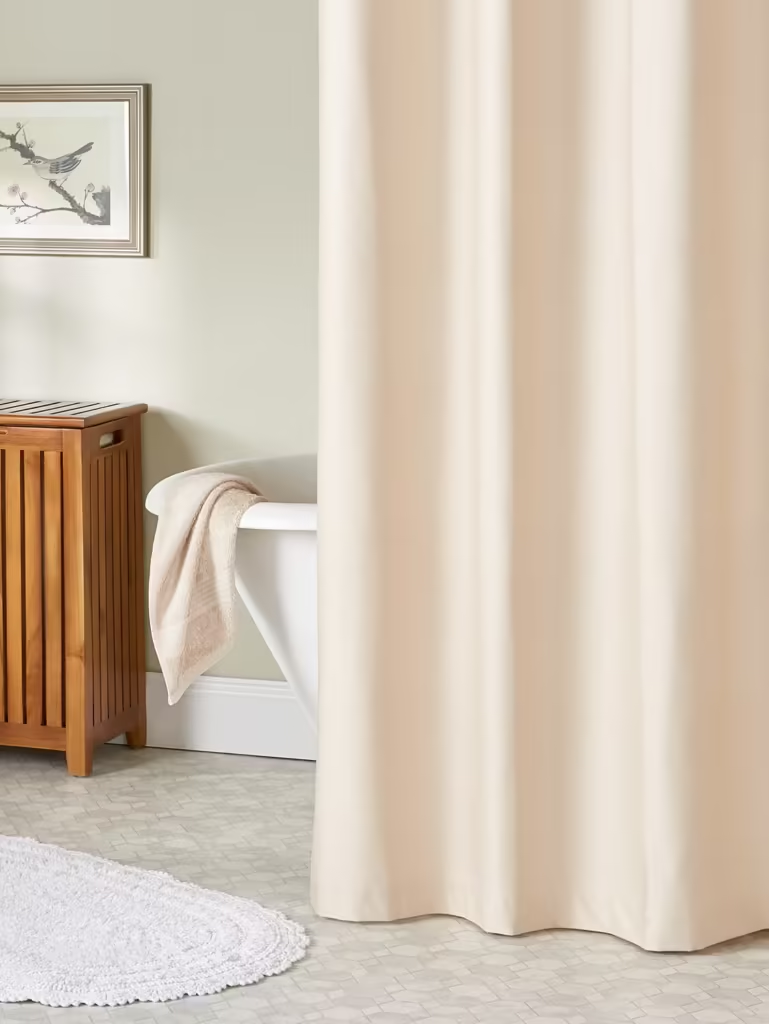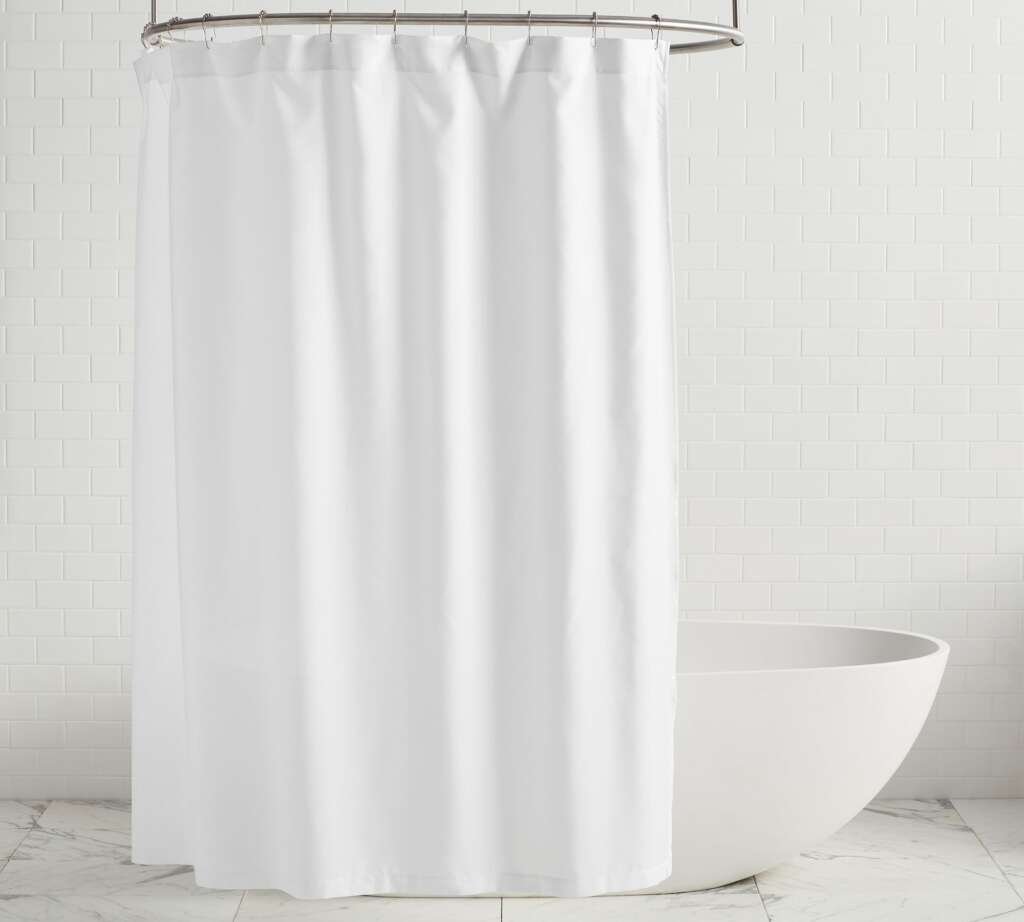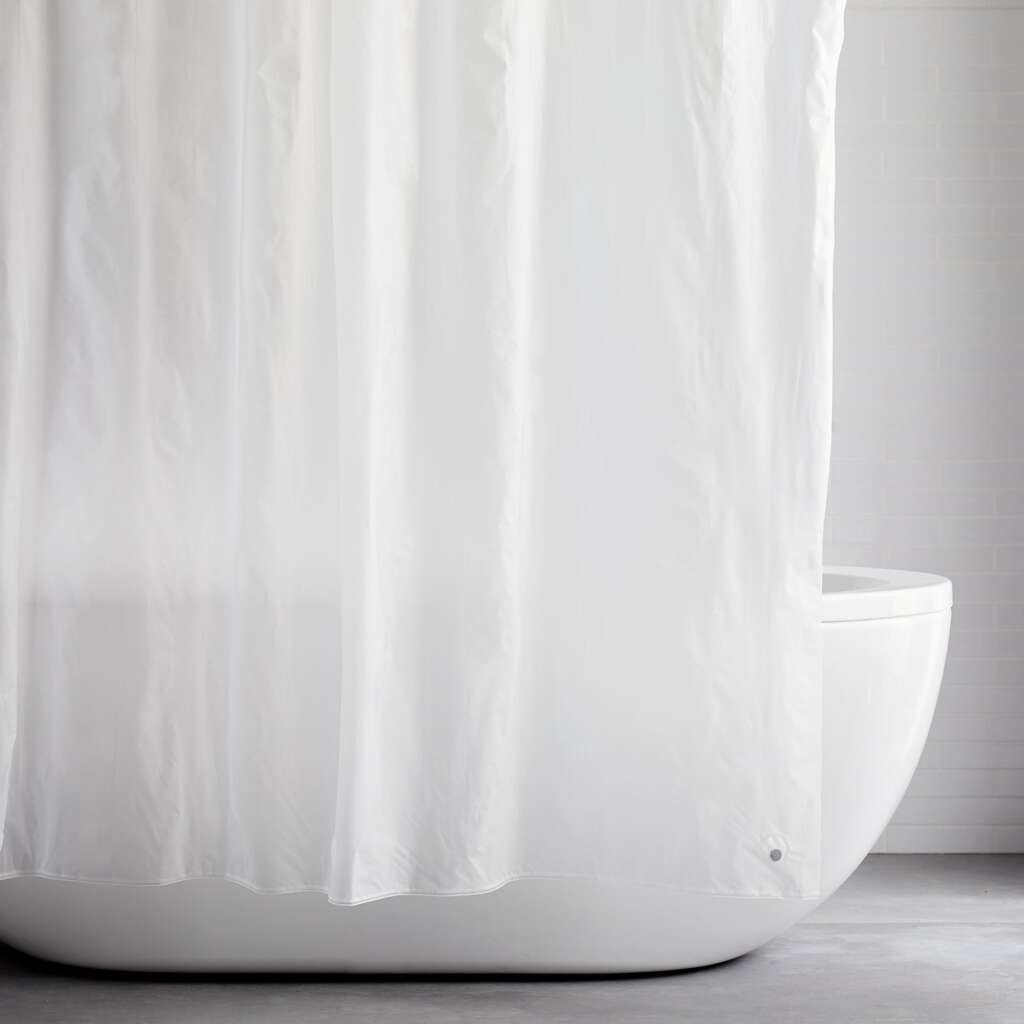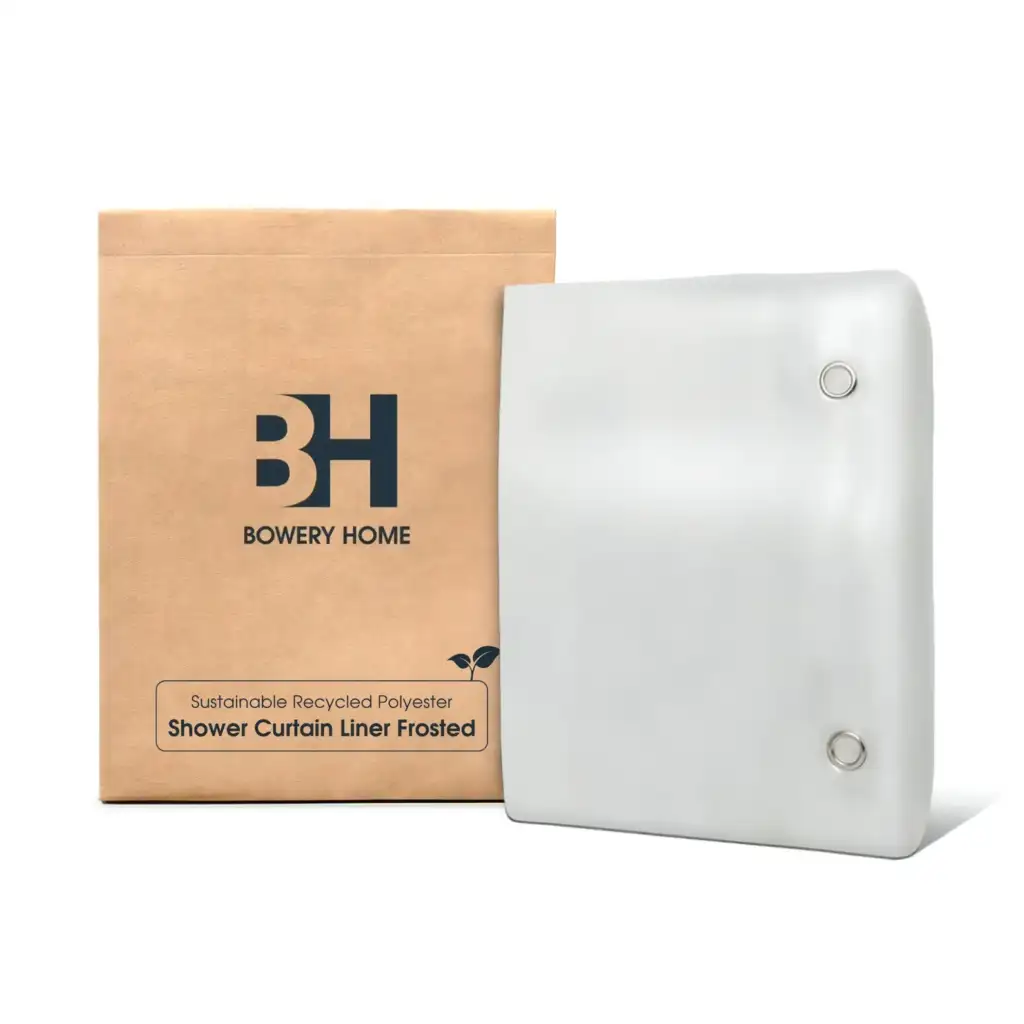Non-Toxic & Sustainable Shower Curtain Liners

Share This Article
Is your shower curtain material made from plastic that releases carcinogens? Here, we’ll break down what to look for and share non-toxic, sustainable options that are healthier for your home and the planet.
| All products featured on The Wellness Feed are independently selected by our editors for their environmental and ethical impact. However, we may earn an affiliate commission when you buy something through our retail links. |
While plastic water bottles and polyester clothing are popular items to swap for recyclable and natural materials, there are dozens of other items in our homes we can swap for healthier and better alternatives. One just so happens to be your shower. Often chosen for performance or aesthetic, the shower curtain material you choose can also keep you healthier and create less waste in the long run.
Similar to how plastic water bottles can leach chemicals into water when heated, plastic shower curtains do not fare well in heat. Every hot shower creates steam, and that steam can carry unseen particles. As more and more people advocate for healthier, greener choices for our homes, that means looking closely at everyday items, even things like our shower curtain material.
The Problem with Conventional Shower Curtain Liners
Traditional showers either have a door (more often than not, made from plastic) or curtains and a liner, which is usually heavy-duty PVC (plastic). While both options are designed to keep water away from floors, shower curtains are poorly designed for the heat and steam of your showers. The thick plastic used, polyvinyl chloride (PVC), has strong carcinogenic properties and releases toxins into the air when heated.
PVC as a shower curtain material can also can release volatile organic compounds, known as VOCs, into the air. They can also contain phthalates. Breathing these chemicals can irritate your lungs. Some studies link them to problems with hormones and lung disease, especially in children. Even when old PVC liners are thrown away, they continue to release toxins in landfills.
In a perfect world, these materials wouldn’t exist. But, given their cheap price tags and durability, these materials are widely used despite their environmental cost. So, it’s up to consumers to advocate for and support clean, non-toxic materials.
What to Look For in a Non-Toxic Liner

Finding a non-toxic shower curtain liner means knowing what to avoid and understanding what good options are available. A non-toxic liner won’t release harmful chemicals into the air. It will be free from things like VOCs and phthalates. Look for labels such as “PVC-free,” “chlorine-free,” and “BPA-free.” PEVA and EVA are two common materials you’ll see. These are much safer than traditional PVC liners.
Honest brands will tell you exactly what their products are made of. They will also share details about how they make their items. Always read the product description.
PEVA & EVA
If you want to buy a shower curtain liner made from plastic, choose one made from PEVA or EVA to avoid some of the toxins associated with plastic.
PEVA stands for Polyethylene Vinyl Acetate. It’s a popular choice for people wanting to ditch PVC. These liners are water-repellent and pretty tough. They don’t give off that strong “new plastic” smell. That smell often means chemicals are floating in the air. PEVA is a common, affordable alternative to look for in stores.
EVA, or Ethylene-Vinyl Acetate, is another option. Many see it as a step up from PEVA. It’s known for being even safer and of higher quality. EVA liners are often thicker and more flexible than other types.
When shopping, look for plastic liners clearly marked “BPA-free” and “phthalate-free.”
Fabric Shower Curtain Liners

Fabric shower curtain liners offer a soft, elegant look and are a more sustainable choice compared to plastic ones. You can find them in different materials, each with its own traits.
- Polyester: As a plastic-based fabric, this will have a water-resistant coating. It dries quickly, which helps stop mold growth. Some polyester liners are made from recycled plastic bottles, making them slightly more sustainable.
- Cotton: Cotton is a natural material that feels soft and lets air flow. But it can get moldy easily if not dried properly. Because of this, cotton liners come treated for water resistance. For the most sustainable option, look for organic cotton or Oeko-Tex non-toxic certifications. To avoid mold, be sure to air them out well.
- Hemp: Hemp is a plant that is considered sustainable because it grows quickly and needs little water. Hemp fabric is also super durable and naturally resists mold. As a side note, because this isn’t as popular a material, it might cost a bit more upfront.
Some people use a pretty fabric curtain on the outside and a washable fabric liner inside. This way, you can easily clean the part that gets wet. It’s recommended to wash and air-dry fabric liners weekly to keep mildew away.
Beyond the Material: Sustainable Features and Care
A shower curtain liner that lasts a long time is more sustainable. Why? Because you won’t have to buy new ones as often. This cuts down on waste and saves you money, too. Look for liners built to stand up to daily use. Before you buy, feel the liner’s material.
- Does it seem sturdy? Does it feel like it will last?
- Give your liner a quick check for good stitching or strong seams.
- Are the grommets reinforced?
These small details show how well the liner is made. Investing in a durable liner means fewer trips to the store and less stuff in landfills. It’s a smart choice for your wallet and the planet.
Keeping your shower liner clean is key to its lifespan. Easy-to-clean liners help prevent mold and mildew. This is a common problem in bathrooms. After you shower, spread your liner out fully. Don’t let it bunch up, as this traps moisture. Wiping down the bottom of the liner helps a lot too. You can also spray a homemade mix of water and white vinegar on the liner. This natural solution helps fight mildew.
For PEVA and EVA liners, a simple wipe down with a cloth often does the trick. Fabric liners can be tossed in the washing machine. Always check the care tag for specific instructions. Use a mild, eco-friendly cleaner for regular upkeep. This keeps harsh chemicals out of your drain and away from your family.
These simple steps make a big difference. They keep your bathroom fresh. They also make your liner last longer. A little bit of care goes a long way.
Making the Switch: Tips for a Healthier Bathroom
To choose the right shower curtain materials for your home, start by asking some key questions. What material is it made from? Does it have certifications like “PVC-free” or “BPA-free”? What do other buyers say about the brand?
Also, when you switch to a new, healthy liner, be mindful about what you do with the old one. Old PVC liners are usually not recyclable through curbside programs. Most often, they need to go in the regular trash. Some specialized recycling centers might take certain plastics. Check with your local waste management services for options. They can tell you what’s available in your area. Recycling helps keep waste out of landfills.



